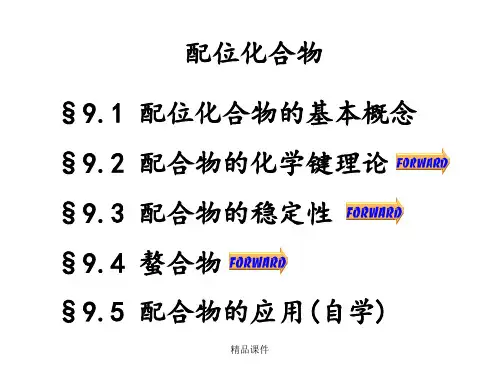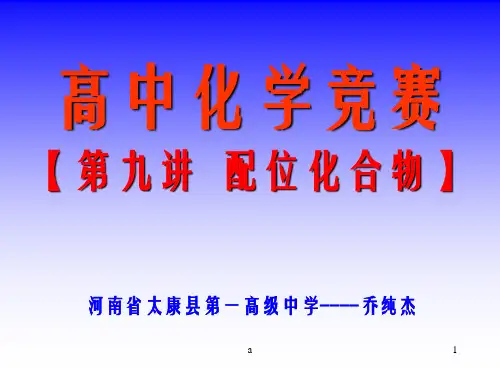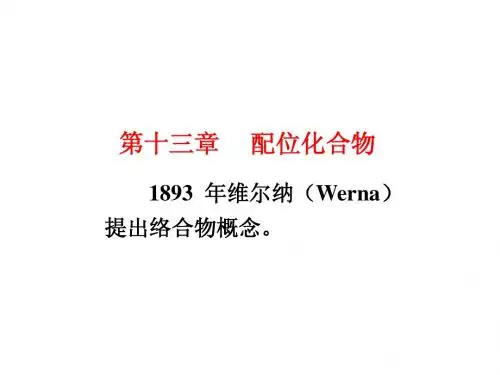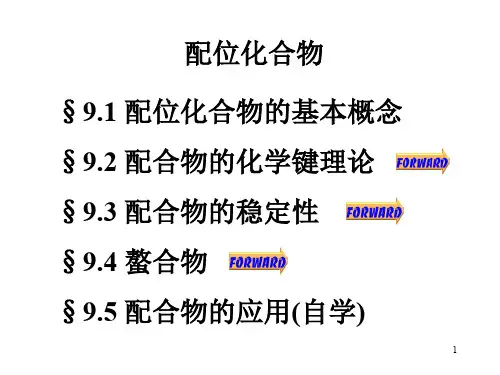‘primary valency’).
47
§ 2、配合物的立体化学
1 常见配合物的构型
❖配位数2:
中心原子的电子组态: d10
例如:Cu(I) Ag(I) Au(I)
Hg(I)
直线形,D∞h Cu(NH3)2+, AgCl2, Au(CN)2,HgCl2– [Ag(NH3)2]+,HgX2
48
❖ 配位数3:KCu(CN)2
13
§1.2.常见配体和配合物
1. 可作为配位原子的元素:
IVA
VA
VIA
VIIA
C
N
O
F-
H-
P
S
Cl-
As
Se
Br-
Sb
Te
I-
14
15
16
17
18
19
20
21
22
23
24
25
26
27
28
29
30
31
32
33
34
35
36
37
38
39
2. 配合物分类:1)按中心离子数分类
中央离子有两种价态: 主价和副价;
主价和副价可同时得到; 副价具有方向性
44
45
A. Werner 提出的配合物结构
46
S. F.A.Kettle 对维尔纳 的评价
The father of modern coodination chemistry is Alfred Werner, who was born in France in 1866 but lived most of his life in Zuerich. Werner’s greatest contribution to coondination chemistry came in a flash of inspiration (at two o’clock in the morning) when he recognized that the number of groups attached to an atom (its’ secondary valency’)need not equal its oxidation number( he called it









